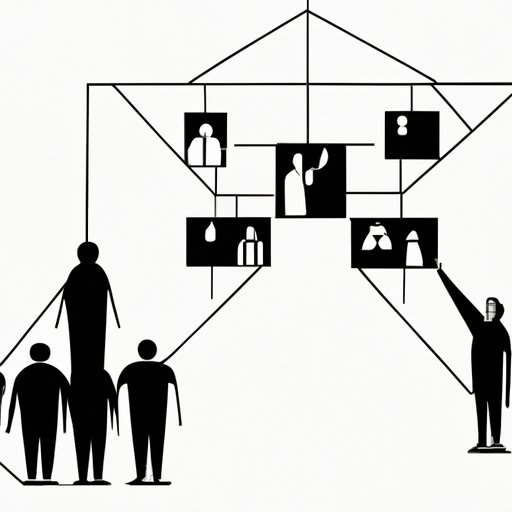
Introduction
Visual learning is an approach to learning that utilizes visual aids such as images, videos, diagrams, and other visual representations to help students understand concepts and remember information. Visual learning is a powerful tool that can help individuals of all ages and learning styles enhance their learning experience. In this article, we will explore different techniques and strategies for incorporating visual learning into studying habits, virtual classrooms, and the workplace. Whether you are a student, teacher, or employee, this article is for you.
Visual Learning: The Science Behind Why It Works
Research has shown that visual learning has a significant impact on the brain’s ability to process and retain information. Visuals help with memory, attention, and understanding by stimulating the brain’s visual cortex, a region of the brain responsible for processing visual information. Research suggests that the brain processes visual information faster and more efficiently than textual information. Visuals also enhance the brain’s ability to draw connections between pieces of information. This is crucial for retaining information and understanding complex concepts.
Visual Learning Techniques: Tips and Tricks to Boost Your Learning
Incorporating visual learning into studying habits can significantly enhance the learning experience. The following are a few practical strategies for incorporating visual learning into your studying routine:
Mind Mapping
Mind mapping is a visual technique that involves creating a visual representation of a concept or idea. This technique is beneficial for organizing and understanding complex information. Mind maps are particularly useful for brainstorming, note-taking, and problem-solving.
Using Images and Videos
Images and videos are powerful tools for enhancing learning and retaining information. They are useful for illustrating concepts, processes, and procedures. For example, a video demonstration of a chemical reaction can help students understand the process more effectively than reading about it in a textbook.
Creating Graphic Organizers
Graphic organizers are visual aids that help students organize and understand information. They are useful for breaking down information into manageable parts. Graphic organizers can be used for note-taking, brainstorming, and problem-solving.
Visual Learning and Virtual Classrooms
The rise of remote and online learning has presented new challenges for students and teachers. The absence of physical classrooms can make it difficult for students to stay engaged and communicate effectively with their teachers. Visual learning strategies can help enhance the virtual learning experience for both students and teachers. The following are some examples of how visuals can help in virtual classrooms:
Engagement
Visuals are powerful tools for capturing and maintaining students’ attention. They can be used to make learning more engaging and exciting. For example, a teacher can use images, videos, and animations to illustrate a concept and make it more interesting.
Communication
Effective communication is crucial in the virtual classroom. Visual aids can help make communication more effective by providing context and clarity. For example, a teacher can use an image to illustrate a point and ensure students understand the concept.
Comprehension
Virtual classrooms can be challenging for students who struggle with comprehension. Visual aids can help students better understand complex concepts and retain information. For example, a teacher can use a graphic organizer to break down a complex topic into manageable parts.
The Benefits of Visual Learning in the Workplace
Visual learning is not just beneficial for students; it can also be integrated into training and development programs in the workplace. The following are some examples of how visual learning can aid in the workplace:
Learning Complex Concepts
Visual aids can help employees understand and retain complex information such as data, statistics, and procedures. For example, a presentation with charts and graphs can help employees better understand financial data.
Improving Productivity
Visual aids can also improve productivity by providing employees with clear instructions and procedures. For example, a flowchart can help employees understand a particular process and perform their tasks more efficiently.
Learning Through Art: The Power of Visual Creativity
Art-based activities can be powerful tools for promoting creativity, critical thinking, problem-solving, and communication in learning. They can be used to enhance learning in a variety of subjects, including math, science, and history. The following are some benefits of integrating visual creativity into learning:
Self-Expression
Art-based activities can help individuals express themselves and explore their emotions in a safe and creative environment. This is particularly beneficial for students who struggle with verbal communication.
Personal Development
Art-based activities can promote personal development by enhancing self-awareness, self-esteem, and confidence. They can also encourage individuals to explore their creativity and develop new skills.
Critical Thinking and Problem-Solving
Art-based activities can help individuals develop critical thinking and problem-solving skills by encouraging them to think creatively and outside the box. For example, a student may use art to explore solutions to a problem.
Conclusion
Visual learning is a powerful tool that can enhance learning and retention in various settings. The techniques and strategies discussed in this article can help individuals of all ages and learning styles improve their learning experience. Whether you are a student, teacher, or employee, we encourage you to explore different visual learning techniques and strategies to enhance your learning and retention. Incorporating visual creativity into learning can also have a profound impact on personal development and critical thinking skills. We hope you have found this article informative and helpful.




